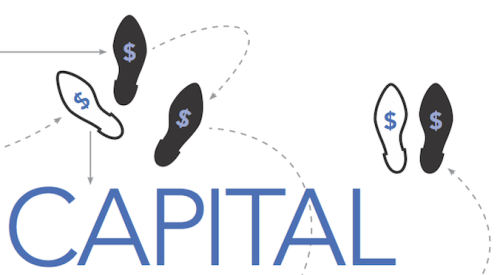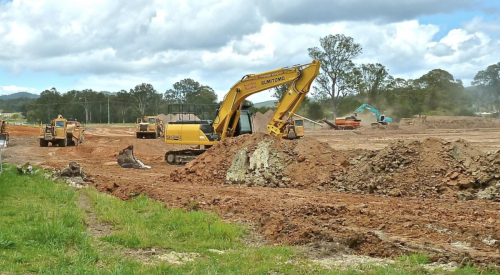It was a deal that could save a builder/developer's company. Doug Shipman, CEO at Developer's Financial Solutions, had found an equity partner who loved his client's project and was ready to move forward - for 50 percent ownership. Despite facing bankruptcy within two weeks, the builder balked. "We were on the phone begging him to take the deal," Shipman says. "One of my partners spent the whole weekend trying to drill sense into his head. He believes people are stealing from him. Even facing bankruptcy, the reality is not settling in."
The reality settled in earlier this year for Matt Osborn, president of Greenwood Village, Colo.-based Village Homes. Having filed for bankruptcy in 2008, Osborn assessed the company's core assets—a handful of communities and finished lots—and put together a package for investors. He ultimately found an investor who recognized the real opportunity lay not just in the land, but also in the homes that were under construction because of the quick return on investment the houses represented. The deal closed in December 2009. A new company, NVH WIP, was established to buy Village Homes' assets. It would operate under the name Village Homes and the management team would stay in place. The catch? As of this year, it's not Osborn's company anymore.
"Village Homes essentially ceased to exist," he says. "None of the principals of the old group have any ownership in the new group."
It's bittersweet, Osborn acknowledges, but it was the only way to move forward.
"A lot of what drove Village Homes into bankruptcy was not being able to work out a plan with any of our lenders," Osborn says. "With the new entity, with the ability to finance operations, overhead and construction with cash is a huge benefit. I can't overstate that enough. It's just critical. It gives us life as an operating team, and gives us a lot more flexibility than if we had any debt financing. It's a lot more available, a lot more nimble money than if we had to go out and finance new starts or new acquisitions. It's infinitely more flexible."
Eventually, he thinks that AD&C financing will return to a more traditional model, with builders and bankers sitting down to do business together, but it could take years.
"It will take time to rebuild that trust," he says. "It's a two-way street. The trust has been broken on both sides. It's going to take awhile for that relationship to mend itself. It's like a bomb went off in the industry."
'There Is No Bank Money'
Perhaps implosion is the more apt description for what's happened to AD&C financing.
"Right now, there is no bank money in any form or fashion that I've seen, except for the public markets," says Steve Friedman, national director of home building for Ernst and Young. The situation is so grim that it raises sobering questions about the future of builder financing. Will banks ever come back to housing? And if they do, to what extent?
The need for banks to return to the market is imperative, says Dave Ledford, senior vice president of housing finance and land development at the National Association of Home Builders.
"I don't see another source with the capacity to finance projects," he says. "We really need them to come back. The question is whether they can hold those loans in their portfolios."
That is indeed the question. Nationally, builders are telling NAHB that their bankers are being instructed by federal regulators not to do loans for housing. NAHB has been meeting with officials from the Treasury Department and the Federal Reserve, including Fed Chairman Benjamin Bernanke, to discuss solutions to the problem.
"There needs to be some limit, but we hope not a severe one," Ledford says. "We need to have regulators focus on how the loans are made as opposed to how many."
Still, Ledford says he doesn't see the banks returning to builder lending in a substantive way within the next year or so.
Jim Weigel, a former builder who now works with industry consultant The Shinn Group, in Littleton, Colo., is less optimistic, envisioning a window of two to eight years before banks stop losing money on real estate loans. "Plus, give it a couple of years for them to forget a little bit," he says.
Then there are those, Ledford among them, who believe that the financing market for builders has been fundamentally changed by this recession, with a "new normal" emerging within a couple of years that includes private equity, private debt and some bank involvement.
"I think the banks eventually will come back, but they won't be as dominant as before," he says. "We're going to have to do a patchwork of different types of financing because the past methods are limited."
Filling the Void
That's exactly what Weigel did to survive when he was a builder during downturns in the '80s and '90s. He cobbled together a variety of funding sources—bank loans, construction-to-permanent financing, friends and family investors, convincing subs to wait to be paid until closing—that he used on a house-by-house basis.
"You just scramble," he says. "Every house is financed a different way." If it sounds exhausting, that's because it is.
The gnawing question today is what will fill the void left by banks that are being told by federal regulators not to write any more real estate business while they have so many non-performing loans already in their portfolios. For now, it appears that three sources of financing have emerged: private debt and equity, friends and family networks and construction-to-permanent loans.
1. Private debt and equity
By now, most builders have at least looked into borrowing from one of the private sources that have emerged. Many of the prospective investors have no experience with real estate, and the builders have no experience with them.
There are numerous sources for debt financing within the private market, but they're nothing like how builders are used to doing business with their bankers. Private investors can be more creative with terms and aren't subject to extreme FDIC regulations, Shipman notes, but they're also not going to show a builder proof of funds, they'll take longer than a bank and they're not going to sit down for a one-on-one meeting to negotiate terms.
Private equity, in particular, is difficult for builders to embrace because it gives the investor an ownership stake in their business.
"Builders don't like it even before they know what it's like," says Maggie Marotta, principal at Plano, Texas-based Apogee Partners. "It's such a different world. Builders would walk into a bank and give them financial information. The bank would be anxious to help because they wanted other relationships. Private equity doesn't care."
Shipman advises builders to exhaust every debt avenue they have before considering private equity. "The cost of equity is going to be quite high, and they'll want two to three times return on their money," he says.
One straight debt source that has emerged recently is CalCon Mutual Mortgage, a San Diego-based lender which traditionally has focused on high-rise residences, but recently started offering short-term, interest-only construction financing to builders at rates starting at 5.99 percent. The loans are based on 60 percent loan to value - not loan to cost - and are available for specs as well as pre-sales. The money is available on a per-lot basis; initial deals are typically four to six lots.
Managing director Steve Witt says the company has $30 million a month "or more" available to lend. There are, naturally, a few catches. CalCon also wants to finance the mortgage for the buyer, the rates are driven by personal credit scores and all the loans require a personal guarantee.
"No ifs, ands, or buts," he says. "I don't know a lender out there doing non-recourse." Finally, the loans are lot-specific, which means the builder must break out prices per house and file a separate loan application for each lot.
2. Friends and family funds
The friends and family approach to financing is "actually getting done," says Ernst & Young's Friedman. Unlike other private debt and equity, these investors generally have a long history with the builder. "You're tapping people whom you know and who know your reputation and track record," Friedman says. "It's not as much about the project as the relationship."
For builders who are reluctant to borrow from friends, family and associates, Weigel notes that it's a pretty good deal for the investors.
"Think about it," he says. "Nobody wants to invest in the stock market right now, and CD rates stink. These are people who have net worth and don't want to take a 2 percent yield. They're willing to take some of that worth, take a little higher risk profile, put it with a builder they know and trust and get something in the 5 to 15 percent range. Even former customers could come into that."
Eric Lipar, CEO of LGI Homes in Conroe, Texas, used friends and family financing to buy 210 foreclosed lots in a Fort Worth development called Deer Creek. His bank was actually willing to give him 75 percent loan to value on the lots and a vertical line to build the houses. He needed 25 percent - $1.5 million - for the down payment. He opted to set up a private placement memorandum (PPM) and raised $2.1 million from 17 individuals, including employees, trade contractors and friends. The minimum investment was $100,000; investors were told the horizon for return on their investment would be three to five years. They'll earn about 20 percent.
Lipar basically worked full-time for about three months, doing presentations to about a hundred people. It cost about $50,000 to do all the corporate and regulatory work to set up the fund, plus the expense of the presentations.
"We spent a lot of money on travel and entertaining," he says. "Asking someone to write you a $100,000 check is not the easiest thing in the world."
It was a lot of work, but it paid off, Lipar says. LGI started building houses at Deer Creek in June 2009, had its first closings in October and is averaging a little more than six closings a month.
"If it wasn't for that, we wouldn't have been able to do that deal," he says. "As that development starts paying back, we can look at other opportunities for that money."
3. Construction-to-perm loans
Construction-to-permanent financing—a single loan that includes both a construction loan element and a long-term mortgage—has been around for a long time and is commonly used by custom and build-on-your-own lot builders. Bankers like them because "everyone sees the source of repaying sitting right there in front of them," Weigel says.
Apogee's Marotta thinks construction-to-permanent loans are the way of the future for builders.
Stanton Homes, a custom home builder based in Apex, N.C., has used them for years.
As a financing vehicle, they have a lot of advantages, says Penny Hull, vice president of marketing and business development for Stanton Homes. Lenders like them because, in most cases, the homebuyer's deposit goes straight to the loan, instead of to the builder, which increases the lender's confidence that the buyer will complete the sale.
"I think lenders overall will be a lot more willing to loan to the individual homebuyer than the builder," Hull says. "That way, they have a full, clear view of the buyer's finances. If they're financing the builder, they don't know the buyer's capabilities, especially when they're not locked into financing yet. With this, they're locked into the loan at construction. It makes the lenders more confident."
Some believe that the financing market for builders has been fundamentally changed by this recession, with a "new normal" emerging within a couple of years that includes private equity, private debt, and some bank involvement.
It makes homebuyers more comfortable because the builder gets paid in draws as the house moves toward completion and a third-party inspector checks progress before each payment. That way, they know the money won't be spent until the house is built. The buyer also knows upfront that he's qualified to move in when the house is finished.
The benefit for the builder is that it eliminates the risk of putting out the money to build a house for a buyer who can't qualify for a loan. The drawbacks mostly revolve around timelines, says Hull. When they use builder financing, all their paperwork is already on file with the lender. With construction to perm, there may be delays if all the buyer's required paperwork isn't submitted properly. "The overall approval process may take a little longer," she says.
While Stanton Homes offers its buyers both traditional financing and construction-to-perm loans, nearly all of them choose the latter, says Hull.
"The approval process is easier, and banks are more willing to issue end-user financing than traditional," she says. "Lenders are much more hesitant these days to fund presale contracts, but the doors are wide open for the exact same home to be built when the buyer uses a form of construction-to-perm financing, due to the built-in project control."
Can't the Feds Help?
Builders nationwide have been begging for federal intervention, arguing that the lack of access to AD&C financing threatens the nascent housing recovery. Two bills are in Congress now that address the issue, but neither offers a near-term solution. H.R. 5297, the Small Business Lending Fund Act of 2010, provides community banks with $30 billion in capital to expand lending to small businesses, including builders. That bill has passed the House and now awaits approval by the Senate.
It's a start, but it's far short of a solution.
"The builders could take every dime of that $30 billion," Apogee Partners' Marotta notes.
A second bill, H.R. 5409, would create a $15 billion loan guarantee program for residential AD&C lending under the Treasury Department—something along the lines of an FHA for construction financing, but only for financially stable builders in markets that aren't overbuilt. And even its sponsor, Rep. Brad Miller of North Carolina, doesn't think the bill will get very far this session.
"I'm not sure we can get this done," Miller says. "But if we can't, at least it perhaps will help create a political environment to do something else—maybe regulatory forbearance or relief to look more closely at real estate lending by banks rather than just saying, 'Cut your lending.'"
For Village Homes' Osborn, the near term looks positive. The company has access to capital to build houses. Consumers shouldn't even notice a difference, he says, other than the fact that they've refreshed some of their floor plans. He's hoping that the lessons learned from this financial crisis aren't forgotten.
"I started as a builder in the early '90s, right after the last big housing correction," he says. "I can remember people talking about never making the same mistakes they did in the '80s, and here we are making the same mistakes. We'll get to the point where there's a more traditional relationship and more traditional terms. It's going to take a while."
Pros and Cons of Three Emerging Alternative Financing Sources
Private debt and equity
PROS
- Numerous debt/equity financing sources are available
- Private investors can be more creative with terms and aren't subject to extreme FDIC regulations
CONS
- Longer approval process than traditional bank financing
- Equity investors typically get an ownership stake in the business
- Loans are often lot-specific, requiring an application for each lot
Friends and family funds
PROS
- Investments can be more lucrative than traditional vehicles (e.g., stock market, CDs)
- Builders fundraise based on trusted relationships and reputation, not just project specifics
CONS
- Builders are often hesitant in asking family and friends for money
- Fundraising process can be extensive and costly
- Investments can be more risky than traditional sources
Construction-to-permanent loans
PROS
-
Fast, easy approval process for homebuyers
- Banks prefer this approach because of the built-in project controls
- Less risk for builders by not having to put money out for a house for buyers who can't qualify for a loan
CONS
- Homebuyer's deposit goes to the bank, not the builder
- Builders receive payments in installments during construction
- Third-party inspector checks construction progress before each payment
- Master the paperwork: What builders need to file to get project financing

Master the Paperwork: What Builders Need to File to Get Financing
Maggie Marotta, principal at Plano, Texas-based Apogee Partners, spends all day every day trying to connect builders with AD&C financing. The problem that has her beating her head against the wall is getting builders to put together the information the investors require to even consider doing a deal. What they can't seem to accept is that builders who want financing have to follow the golden rule: He who has the gold, makes the rules.
"The reporting is a tough, tough situation," Marotta says. "They don't have people on staff to do it, and they're not accustomed to having to do it. One person didn't want to update his information from 2008. He said he didn't want to do it unless someone was really interested. We told him that no one would talk to him unless he did."
Steve Witt, managing partner of CalCon Mutual Mortgage, confirms the advice Marotta gave to her less-than-enthusiastic builder. Get your financials up to date before you make the first call to look for money.
"We're looking for people who are motivated," says Witt, who says his firm has a capacity of $30 million a month to lend. "If we give them an items-needed list and they give it back to us in 48 hours, we know they're serious. Otherwise, we're moving on."
What's Required
What kind of information do the investors need to see from you before they're willing to discuss putting up their cash?
Here's what Marotta says you need to get you in the door:
- Your company's current, correct financial statement
- A tax return for 2009, at least; the past three years would be better
- An executive summary about you and your project - not more than a couple of pages. It should include information about your company and the management team and specifics about the project, including location, any restrictions on the land, product type and time frame for development.
Don't skimp on the section about your management team, says Matt Osborn, president of Village Homes in Greenwood Village, Colo. Pro formas and appraisals on the project "The assets are fairly easy to quantify, and get an appraisal to justify it," he says. "A lot of the scrutiny will be on the quality of the operating team. It's showing you can build a plan you can meet, and not pad it."
You also need to figure out what makes you different from every other builder. "It's finding the niche that will separate your story from the next person down the street, the next package they see," Osborn says. "What's the differentiating factor for the operating platform? It could be assets, processes, the operating entity—a number of factors. There needs to be something to stand out, some element that differentiates you. There has to be value in the package you're putting together."
Witt wants an executive summary on the project that includes the location (city, county and state), number of lots to be built and estimated monthly absorption. He's looking for home builders with at least four to six years of experience and someone on the application with a FICO score of 700 or better. He also needs a cost breakdown per home and renderings and elevations of each home to be built.
If all that looks OK, he'll take a "little deeper dive," he says, and ask for proof of insurance, proof of ownership, "all the things builders were used to submitting for bank loans." Oh, and he wants all of this information submitted for every lot you want to build a house on. Four lots, four sets of information, even if you're building the same house on every lot.
"It's tedious and time-consuming, but we're doing that because the program is lot-specific," Witt says. "It's a pain in the butt to do it per lot, but they can't get money anywhere else, so they'll do it." Spoken like a man who knows the golden rule.













